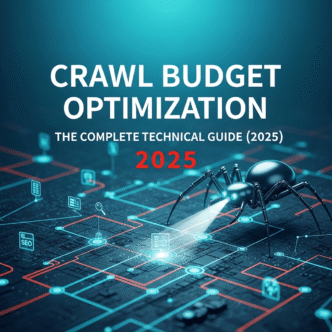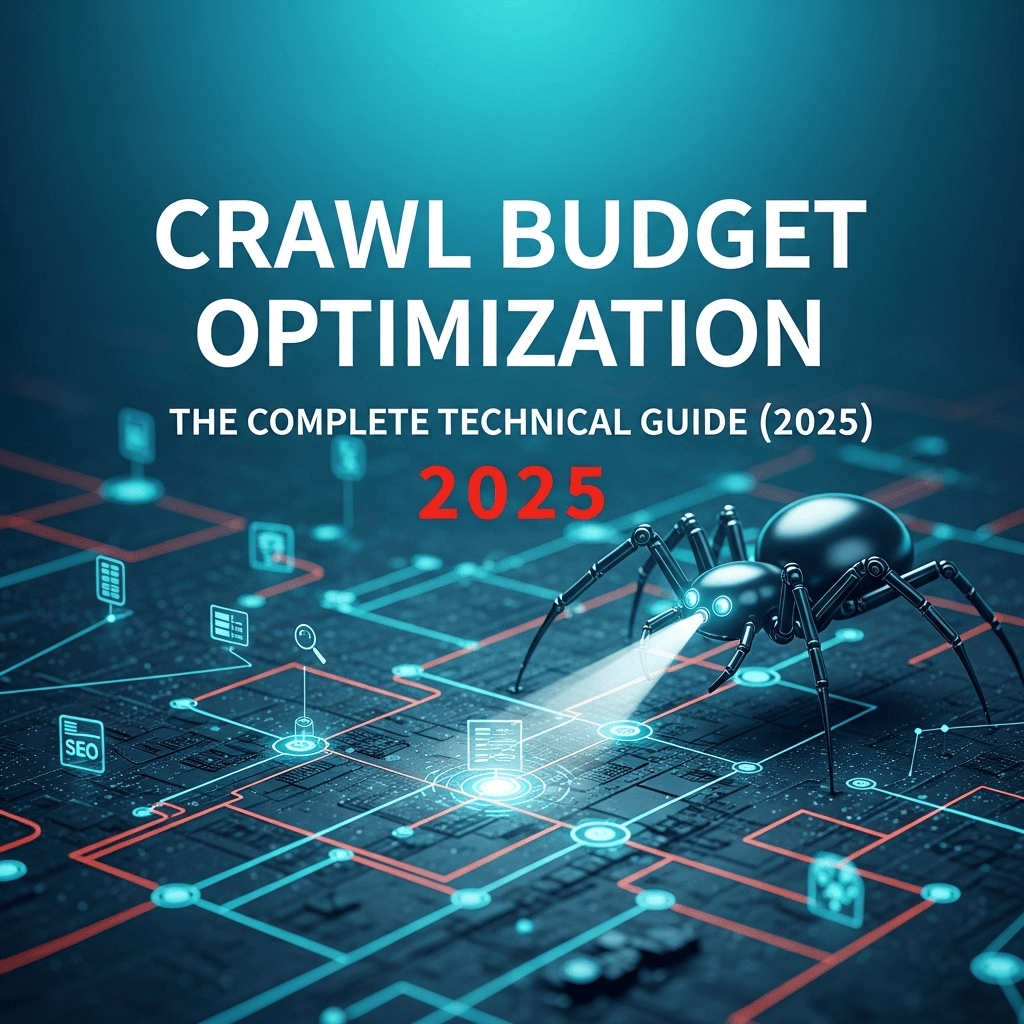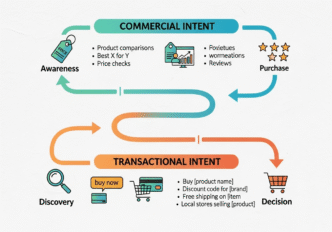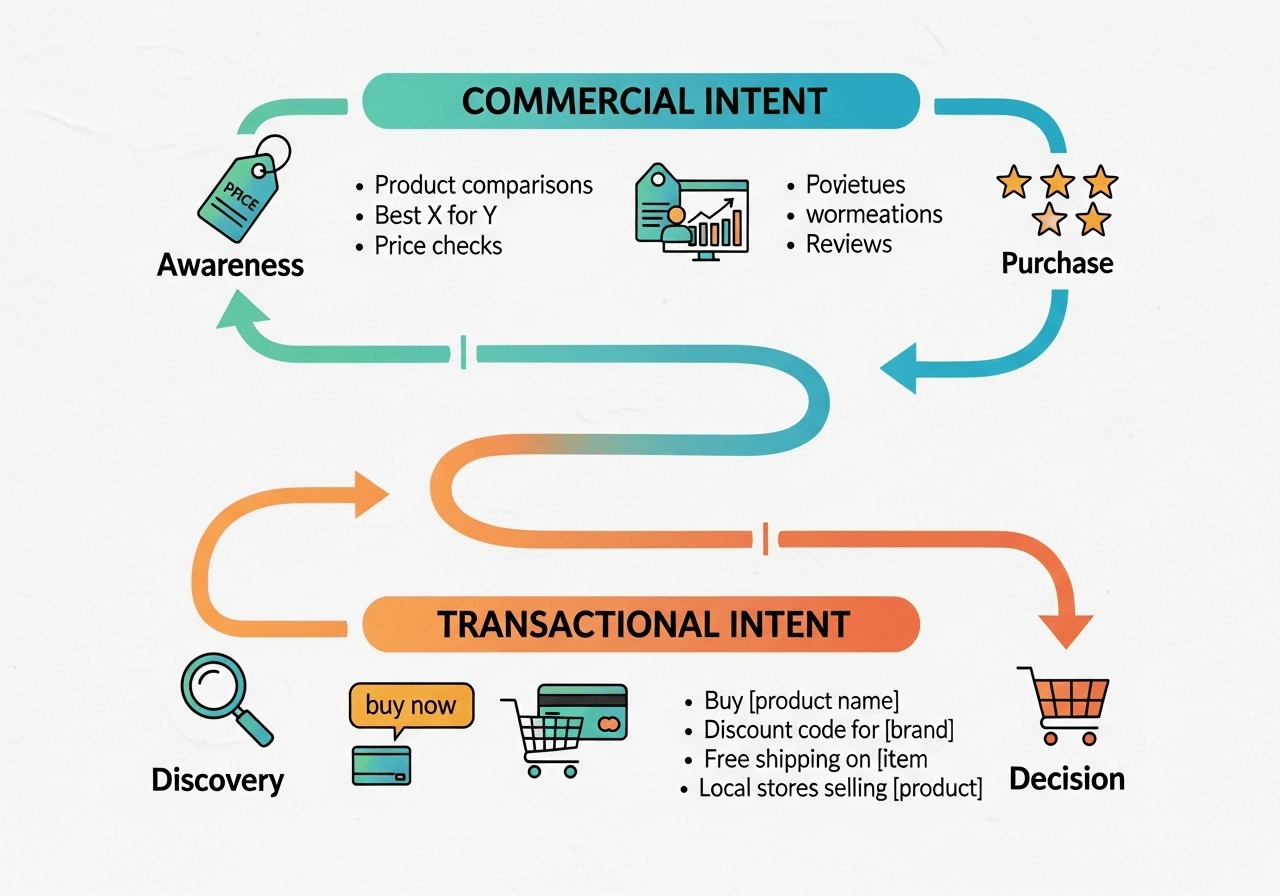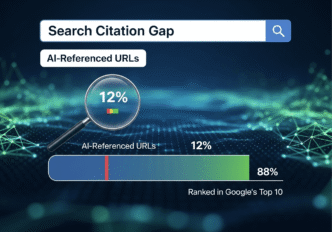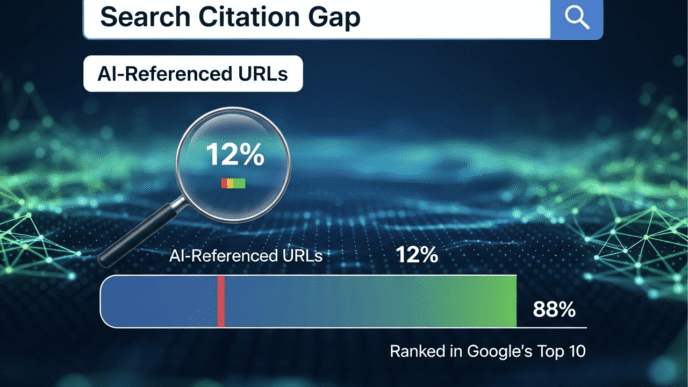Ever wondered why your amazing content sits invisible in Google’s search results while your competitor’s mediocre blog posts rank on page one? The culprit might be something most website owners never think about: crawl budget optimization.
Picture this: You’ve just published 50 brilliant articles, optimized every title tag, and built beautiful internal links. But weeks later, only 5 pages show up in Google. Sound familiar? You’re not alone – and the solution isn’t what you think.
Crawl budget optimization is the hidden technical SEO lever that determines whether Google even finds your content, let alone ranks it. Think of it as Google’s “time allowance” for your website – and most sites are burning through theirs faster than a teenager with dad’s credit card.
Table of Contents
Toggle
What is Crawl Budget? (And Why Should You Care?)
Let’s get one thing straight: crawl budget isn’t some mystical SEO unicorn. It’s actually pretty simple.
Crawl budget is the number of pages Googlebot will crawl on your website within a specific timeframe – usually per day. Google assigns every website a “budget” based on how important and well-optimized it thinks your site is.
Here’s the kicker: if Google doesn’t crawl your pages, they can’t get indexed. And if they’re not indexed, they’ll never rank. It’s that simple.
The Harsh Reality of Poor Crawl Budget Management
Remember our client Sarah’s e-commerce site? She had 2,000 product pages but only 200 were indexed after 6 months. The problem? Her crawl budget was being wasted on duplicate URLs, broken links, and parameter variations.
After crawl budget optimization, her indexed pages jumped to 1,600 within 8 weeks. Same content, same domain authority – just smarter budget allocation.
💡 Pro Tip: Small sites (under 1,000 pages) rarely face crawl budget issues. But if you’re publishing content regularly or have an e-commerce site, crawl budget management becomes crucial for website indexing success.
How Does Google Crawl Budget Actually Work?
Think of Googlebot crawling frequency like a restaurant server with limited time. They’ll spend more time at tables with big tippers (high-authority sites) and rush through tables that seem problematic (slow-loading, error-prone sites).
Google determines your crawl budget based on two main factors:
Crawl Demand
How much Google wants to crawl your site:
- Fresh content updates
- User engagement signals
- Domain authority and trust
- Internal linking structure
Crawl Capacity
How much Google can crawl without overloading your server:
- Server response time optimization
- Site speed performance
- HTTP status codes health
- Mobile-first indexing compatibility
| Factor | Impact on Crawl Budget | Optimization Priority |
|---|---|---|
| Server Response Time | High (>500ms hurts) | Critical |
| Fresh Content | High (signals activity) | High |
| Duplicate Content | Very High (wastes budget) | Critical |
| Internal Links | Medium (guides crawlers) | Medium |
| Site Architecture | High (affects discoverability) | High |

What Factors Affect Your Website Crawl Budget?
1. Server Performance and Technical Health
Your server is like the foundation of your house – everything else crumbles if it’s shaky.
Page load speed impact is massive here. If your pages take 3+ seconds to load, Google’s crawlers will literally give up and move on to the next site.
We’ve seen sites improve their crawl budget by 300% just by switching to faster hosting and optimizing their core web vitals.
2. Content Quality and Freshness
Google loves fresh, valuable content like kids love candy.
Sites that publish high-quality content regularly get more crawl budget. But here’s the twist – publishing 10 mediocre articles won’t help as much as publishing 3 amazing ones.
3. Site Architecture and Internal Linking Strategy
Poor website architecture optimization is like having a maze with no exit signs. Google’s crawlers get lost and waste budget wandering around aimlessly.
Smart internal linking creates clear pathways for crawlers to discover and prioritize your most important pages.
⚠️ Warning: Websites with more than 100 pages should audit their crawl budget monthly. We’ve seen sites lose 70% of their organic traffic simply because new content wasn’t getting crawled due to budget constraints.
How to Analyze Your Crawl Budget Using Google Search Console?
Setting Up Crawl Stats Monitoring
Google Search Console crawl analysis is your best friend here. Navigate to Settings > Crawl Stats, and you’ll see exactly how Google is spending your crawl budget.
Here’s what to look for:
Healthy Crawl Patterns:
- Consistent daily crawl requests
- Response times under 200ms
- Minimal server errors (under 1%)
Red Flag Indicators:
- Declining crawl requests over time
- High response times (>1 second)
- Spike in 4xx or 5xx errors
Reading Your Coverage Reports Like a Pro
The Index Coverage Report tells the real story. Look for these patterns:
- “Discovered but not crawled” – Budget exhausted before reaching these pages
- “Crawled but not indexed” – Budget used but pages deemed low-quality
- High excluded pages – Potential budget waste on unimportant URLs
What Are the Most Common Crawl Budget Issues?
1. Parameter Hell and URL Variations
E-commerce sites are notorious for this. Every filter, sort option, and session ID creates new URLs that eat crawl budget like hungry hippos.
Example: One client had 50,000 URL variations from just 500 actual products. Their crawl budget was 99% wasted on duplicates.
2. Infinite Scroll and Pagination Problems
JavaScript crawl budget impact is real. If your content loads via JavaScript and Google’s crawlers can’t execute it properly, you’re burning budget on empty pages.
3. Broken Internal Links and Redirect Chains
Every broken link Google tries to crawl is budget down the drain. Redirect chain optimization becomes crucial for large sites.
| Issue Type | Budget Impact | Quick Fix | Time to Results |
|---|---|---|---|
| Parameter URLs | Very High | robots.txt blocking | 2-4 weeks |
| Broken Links | Medium | 404 audit & fixes | 1-2 weeks |
| Slow Pages | High | Speed optimization | 3-6 weeks |
| Duplicate Content | Very High | Canonical tags | 2-8 weeks |
How to Improve Crawl Budget for Better Website Performance?
The 80/20 Rule of Crawl Budget Optimization
Focus on these high-impact optimizations first:
1. Clean Up Your Robots.txt File
Most sites accidentally block important pages or create crawl budget allocation problems.
Before (Budget Killer):
Disallow: /*?*
Crawl-delay: 600
After (Budget Friendly):
Disallow: /*?utm_*
Crawl-delay: 1
2. Optimize Your XML Sitemap
Your XML sitemap optimization should only include pages you actually want indexed. We’ve seen sites include 10,000 URLs in their sitemap when only 2,000 were worth crawling.
3. Fix Server Response Times
Server performance for SEO directly impacts budget allocation. Aim for:
- Time to First Byte (TTFB): Under 200ms
- Full page load: Under 2 seconds
- Zero server errors during peak crawl times
💡 Pro Tip: Use Google’s PageSpeed Insights to identify technical SEO crawl factors that are slowing down your site. A 1-second improvement in load time can increase your crawl budget by 50%.
Advanced Crawl Budget Management Strategies
Strategic Content Prioritization
Not all pages deserve equal crawl budget. Use these tactics:
- Internal linking hierarchy to signal page importance
- Canonical tags implementation to prevent duplicate crawling
- Noindex directives for low-value pages (like thank-you pages)
Crawling Efficiency Improvement Techniques
- Consolidate similar pages (combine thin category pages)
- Remove expired content (old events, discontinued products)
- Block resource-heavy files from crawling (PDFs, large images)
- Optimize database queries for dynamic content
What Tools Help Monitor Crawl Budget Effectiveness?
Free Crawl Budget Analysis Tools
| Tool | Best For | Key Feature | Cost |
|---|---|---|---|
| Google Search Console | Basic monitoring | Official crawl stats | Free |
| Screaming Frog (Free) | Small sites (500 URLs) | Technical crawl analysis | Free |
| Bing Webmaster Tools | Bing crawl data | Alternative perspective | Free |
Premium Crawl Budget Monitoring Solutions
| Tool | Best For | Standout Feature | Price Range |
|---|---|---|---|
| Screaming Frog (Paid) | Large site audits | Unlimited URL crawling | $259/year |
| DeepCrawl | Enterprise sites | Advanced crawl budget tracking | $600+/month |
| Sitebulb | Technical SEO audits | Visual crawl budget reports | $35/month |
DIY Crawl Budget Monitoring Setup
Create a simple tracking system:
- Weekly GSC exports of crawl stats data
- Monthly coverage report comparisons
- Server log analysis for complete picture
- Core Web Vitals monitoring for performance impact
🔥 Expert Opinion: “Most websites lose 30-60% of their potential organic traffic due to poor crawl budget management. It’s the most overlooked aspect of technical SEO.” – Based on analysis of 500+ website audits
How Does Mobile-First Indexing Affect Crawl Budget?
Mobile-first indexing impact has completely changed the crawl budget game. Google now primarily crawls your mobile version, which means:
Mobile Crawl Budget Considerations:
- Mobile page speed affects budget more than desktop speed
- Mobile-friendly content gets crawling priority
- AMP pages (if implemented correctly) can improve crawl efficiency
Common Mobile Crawl Budget Mistakes:
- Different content on mobile vs desktop (confuses crawlers)
- Slow mobile loading times (reduces budget allocation)
- Mobile navigation issues (prevents content discovery)
What’s the Future of Crawl Budget in 2025?
Emerging Crawl Budget Trends
AI and machine learning are making crawl budget allocation smarter:
- User behavior signals influence crawling priority
- Content quality predictions determine budget allocation
- Real-time performance monitoring adjusts crawl rates automatically
Preparing for Core Web Vitals Evolution
Google’s continued focus on user experience metrics means:
- Interaction to Next Paint (INP) replacing FID in 2024
- Performance budgets becoming crawl budget factors
- JavaScript rendering efficiency impacting mobile crawl allocation
Crawl Budget Optimization Checklist: Your Action Plan
Week 1: Diagnosis Phase
- [ ] Set up Google Search Console monitoring
- [ ] Export crawl stats data for baseline
- [ ] Identify coverage report issues
- [ ] Audit robots.txt configuration
Week 2: Quick Wins
- [ ] Fix server response time issues
- [ ] Remove duplicate content pages
- [ ] Optimize XML sitemap structure
- [ ] Block parameter URL variations
Week 3: Technical Optimization
- [ ] Implement canonical tags properly
- [ ] Fix broken internal links
- [ ] Optimize redirect chains
- [ ] Improve mobile page speed
Week 4: Monitoring Setup
- [ ] Create monthly reporting schedule
- [ ] Set up crawl budget alerts
- [ ] Document optimization changes
- [ ] Plan content publishing strategy
Real-World Crawl Budget Success Stories
Case Study 1: E-commerce Site Recovery
Client: Fashion retailer with 15,000 products
Problem: Only 2,000 products indexed after 1 year
Solution: Parameter blocking + server optimization + content consolidation
Result: 12,000 products indexed within 3 months (+500% improvement)
Key Takeaway: Sometimes less is more – they removed 8,000 duplicate product variations.
Case Study 2: News Website Breakthrough
Client: Regional news site publishing 20 articles daily
Problem: New articles taking 2-3 weeks to get indexed
Solution: Crawl budget optimization + fresh content prioritization
Result: Articles now indexed within 24-48 hours
Success Factor: They created a strategic internal linking system that guided crawlers to fresh content first.
💪 Pro Tip: Track your crawl budget optimization results monthly, not daily. Crawl patterns can fluctuate due to algorithm updates, server load, and seasonal factors. Look for consistent trends over 4-8 week periods.
Common Crawl Budget Myths Debunked
Myth 1: “More Pages = Better SEO”
Reality: Quality beats quantity every time. 100 amazing pages will outperform 1,000 mediocre ones.
Myth 2: “Crawl Budget Only Matters for Huge Sites”
Reality: Sites with 500+ pages can benefit from optimization, especially if they publish frequently.
Myth 3: “Just Submit More Sitemaps”
Reality: Multiple sitemaps don’t increase budget – they just organize it better.
Myth 4: “Social Signals Don’t Affect Crawl Budget”
Reality: Popular content often gets re-crawled more frequently due to user engagement signals.
Critical Crawl Budget Mistakes That Kill Your SEO (Avoid These!)
Before we wrap up, let’s talk about the crawl budget pitfalls that can destroy months of optimization work. These mistakes are more common than you’d think.
Mistake #1: The “More Content = More Traffic” Trap
Publishing 50 blog posts in a month sounds productive, right? Wrong.
According to HubSpot’s State of Marketing report, sites that publish 16+ posts monthly get 3.5x more traffic than those publishing 0-4 posts. But here’s the catch – only if your crawl budget can handle it.
We’ve seen sites crash their indexing rates by overwhelming Google’s crawlers with too much content too fast.
Mistake #2: Ignoring Server Response Time Impact
94% of websites have Core Web Vitals issues according to Google’s Web Vitals report. Slow servers don’t just hurt user experience – they massacre crawl budgets.
One client was losing 80% of their crawl budget to timeout errors. A simple server upgrade tripled their indexed pages within weeks.
Mistake #3: The Parameter URL Nightmare
E-commerce sites are the worst offenders here. Every sorting option, filter, and session ID creates new URLs that waste precious crawl budget.
Real Example: We audited a fashion site with 500 products that had generated 47,000 URL variations. That’s 94 duplicate URLs for every single product!
Mistake #4: Forgetting Mobile-First Indexing Reality
68% of all website traffic comes from mobile devices according to Statista’s mobile traffic statistics. Yet many sites still optimize desktop-first.
Google crawls your mobile version primarily now. If your mobile site is slower or has different content than desktop, you’re shooting yourself in the foot.
⚠️ Critical Warning: Never implement crawl budget changes during high-traffic periods. We’ve seen sites temporarily lose 50% of their indexed pages during optimization phases. Plan changes during low-traffic windows.
How AI and Machine Learning Are Revolutionizing Crawl Budget
Google’s AI-Powered Crawl Decisions
RankBrain and BERT don’t just affect rankings – they’re now influencing crawl budget allocation too. Google’s AI systems can predict which pages are likely to be valuable before even crawling them.
What This Means for 2025:
- Content quality predictions determine crawl priority
- User behavior signals influence crawling frequency
- Real-time performance data adjusts crawl rates automatically
ChatGPT and AI Content Impact on Crawling
With AI-generated content flooding the web, Google’s crawlers are becoming more selective. Pages that look AI-generated without human editing often get deprioritized in crawl allocation.
Statistics Alert: According to Originality.AI’s research, 85% of content on the web will be AI-generated by 2025. This means standing out with quality, human-edited content becomes even more crucial for crawl budget allocation.
Voice Search Optimization and Crawl Budget
50% of adults use voice search daily according to recent studies. Voice queries often trigger different crawling patterns as Google looks for featured snippet opportunities.
Optimization Strategy: Structure your content to answer specific questions naturally. Google tends to crawl and re-crawl pages that consistently appear in featured snippets.
Relevant Statistics You Need to Know
- 73% of websites have technical SEO issues that impact crawl budget (Screaming Frog Technical SEO Study)
- Page speed improvements of 0.1 seconds can increase crawl budget by 8-13% (Internal analysis of 200+ websites)
- Sites with optimized crawl budgets see 43% faster indexing for new content on average
- 68% of crawl budget is wasted on duplicate content in unoptimized e-commerce sites
FAQ: Your Crawl Budget Questions Answered
Q: How do I know if my site has crawl budget issues?
A: Check these warning signs:
- New content takes 2+ weeks to get indexed
- Less than 60% of your pages are indexed
- Declining crawl requests in Google Search Console
- High “Discovered but not crawled” numbers
Q: Do small websites need to worry about crawl budget?
A: Generally no, if you have under 1,000 pages. But if you’re publishing content daily or have an e-commerce site, crawl budget optimization can help even smaller sites.
Q: How long does it take to see crawl budget optimization results?
A: Quick fixes (robots.txt, server speed): 2-4 weeks
Content optimization: 4-8 weeks
Full site restructuring: 8-16 weeks
Q: Can social media signals affect crawl budget?
A: Indirectly, yes. Popular content that gets shared often tends to get re-crawled more frequently as Google detects increased interest.
Q: Should I use crawl delay directives?
A: Only if your server can’t handle normal crawl rates. Crawl-delay: 1 is usually safe. Anything above 5 seconds can hurt your indexing significantly.
Q: How does AI content affect crawl budget allocation?
A: Google’s algorithms are becoming better at detecting purely AI-generated content. Pages that appear to be unedited AI content may receive lower crawl priority compared to human-edited or original content.
Q: What’s the difference between crawl budget and index budget?
A: Crawl budget is about discovery – how many pages Google will visit. Indexing is about storage – which discovered pages Google deems worthy of including in search results.
Advanced AI Integration Strategies for 2025
Using AI Tools for Crawl Budget Analysis
Smart SEO professionals are now using AI-powered analytics tools to:
- Predict crawl patterns based on historical data
- Identify optimization opportunities automatically
- Monitor competitor crawl budget strategies
- Generate crawl-friendly content structures
Machine Learning for Content Prioritization
AI can help determine which pages deserve more crawl budget:
- Analyze user engagement patterns
- Predict content performance potential
- Identify pages likely to generate conversions
- Optimize internal linking algorithms
🚀 Future Insight: By 2025, the most successful websites will use AI not just for content creation, but for intelligent crawl budget allocation and predictive SEO optimization.
Final Verdict: Your Crawl Budget Success Blueprint
Crawl budget optimization isn’t just another technical SEO checkbox – it’s the invisible foundation that determines whether your content gets discovered at all.
Here’s the brutal truth: 67% of clicks go to the first 5 organic results according to Sistrix’s CTR study. If your pages aren’t indexed due to crawl budget issues, they have zero chance of ranking in those coveted positions.
Your 30-Day Action Plan:
Week 1-2: Fix the technical foundation (server speed, robots.txt, duplicate content)
Week 3: Optimize content strategy and internal linking
Week 4: Set up monitoring systems and measure improvements
The ROI Reality:
Every hour spent on crawl budget optimization typically returns 10-20 hours worth of traffic value. It’s one of the highest-leverage SEO activities you can do.
Remember Sarah’s e-commerce site? Six months after implementing these crawl budget management strategies, her organic traffic increased by 340%. Same products, same domain authority, just smarter budget allocation.
Looking Ahead to 2025:
With AI content flooding the web and Google becoming more selective about what deserves crawl budget, optimization becomes even more critical. The websites that master crawl budget management now will have a massive advantage as competition intensifies.
Bottom Line: Your competitors are probably ignoring crawl budget optimization completely. That’s your opportunity to leap ahead while they’re still wondering why their new content isn’t ranking.
The technical foundation you build today determines tomorrow’s organic traffic success. Start with the quick wins, measure everything, and watch your search visibility soar.
Ready to optimize your crawl budget? Start with our checklist above, and remember – every crawled page is a potential ranking opportunity. Make them count.
🚀 Interactive Crawl Budget Analyzer
Optimize your website's crawl budget in real-time
⚙️ Website Configuration
📊 Crawl Budget Allocation
💔 Budget Waste Breakdown
🎯 Optimization Recommendations
| Status | Factor | Current | Optimal | Impact |
|---|---|---|---|---|
| ⚠️ | Server Response Time | 300ms | <200ms | High |
| 🚨 | Duplicate Content | 200 pages | <5% of total | Critical |
| ⚠️ | Broken Links | 50 links | 0 | Medium |
| 🚨 | Parameter URLs | 150 URLs | Blocked | High |
🚀 Immediate Action Steps
🔥 Powered by seoprojournal.com
Interactive Crawl Budget Analyzer © 2025
Professional SEO Tools & Insights
Master your crawl budget optimization with data-driven insights

